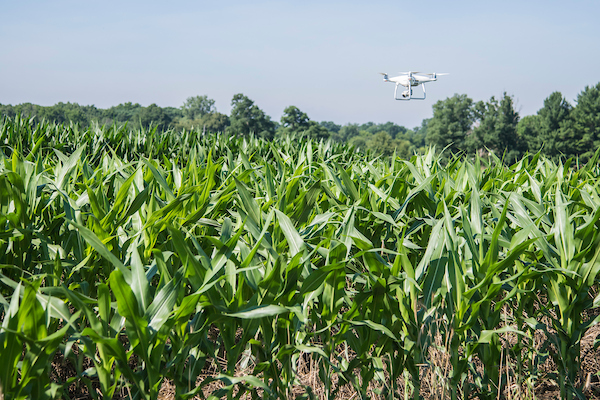 Reviewer
Reviewer
Dr. Lourival Carmo Monaco Neto, Postdoctoral Research Associate
Article
Managing digital transformation through hybrid business models. Herbert Endres, Kristina Stoiber and Nina Magdalena Wenzl
Journal
Journal of Business Strategy, Vol. 41, No. 6, 2020, pp. 49-56
Summary
When innovation is the subject of an article, lecture or conversation, we often think of new products and/or services that will better fulfill customers’ existing or future needs. It also brings to mind the concept of establishing a competitive advantage over other companies in the sector.
In a constantly evolving business environment, especially now that the pandemic has changed the way we perceive the world, understanding major drivers of change may help companies better set themselves up for success. Trends like high digitalization and the increase of a contact-free economy are playing major roles in how the business landscape is going to look in the years to come.
Some important strategies can and should be applied in order to achieve this better strategic position, or, in other words, competitive advantage:
- Have a start-up mindset: Favor action, testing and timely responses.
- Be human at the core: Rethink your operating model based on how your people work best.
- Have a customer-driven strategy: Understand what customers will value and develop new use cases and tailored experiences based on those insights.
- Accelerate digital, tech and analytics: Use advanced analytics to combine new sources of data to make better and faster decisions and strengthen their links to customers.
- Develop ecosystems and adaptability: Change the ecosystem and consider nontraditional collaborations with partners up and down the supply chain.
The last two points are very important when discussing the market trend of digitalization as it consists of a change in information technologies, automatization and the shift from offline to online services. For industries open to these changes, new opportunities for growth are arising and must now be fully exploited. In order to do this, it is not enough to try to adapt by transforming products and services. Instead, the entire underlying business model must be innovated. One interesting route to take is using a type of business model innovation called business model hybridization, an auspicious approach to excel in the ongoing digital change by gaining competitive advantages.
The process of hybridization combines different elements of two basic business models into one hybrid model. It is not about simple product or service innovations, but rather complex combinations of them. The reviewed article used an online betting industry case to illustrate how this strategy can be efficient and successful.
The betting industry is characterized by the parallel existence of two different business models. On one side is the quota-driven business model where a bookmaker acts as a market maker by offering fixed odds and providing market liquidity. On the other side is the order-driven business model where betting exchanges provide (digital) platforms. Here, punters can bet against each other without fixed odds and a traditional bookmaker is not required. Therefore, the ongoing hybridization in the betting industry implies that different elements of the two underlying business models are combined, thus, creating a new hybrid business model.
This business model expanded the customer segments catered by extending its existing channels and providing a broader and more complete or enhanced value proposition. With this, it is possible to improve company cost structure.
The success of this hybridization case can be observed through four aspects: Value Propositions, Customer Segments, Channels and Cost Structure:

Source: ENDRES, SOTIBER AND WENZL, 2020.
Hybridization of a business model is a potential recipe for success for many companies in the digital age, but it is not enough to add a digital component to traditional elements and simply integrate them together. Rather, managers need to realize that the most promising potential of a business model hybridization is the efficient use of arising network effects. If companies focus on closely linking these business model areas during the course of hybridization, network effects can be exploited. As a result, hybridization can make an even greater contribution to the size of the customer network, breadth of the offering, liquidity and, ultimately, to customer benefit.
What this means for Food and Agricultural Business
As in any other industry, changes in the food and agribusiness landscape have happened with great impacts in the past few years, and even more so in 2020. Digitalization is a major force in our fields. During planting or harvesting seasons, our social network feeds are flooded with pictures of farmers in their tractors and combines. Precision farming is booming, and software tools are coming alongside all of these innovations and making their way to our farms.
Companies are now facing the challenge of adapting their business models to this new reality. Using a hybrid digital business model is a path that could, and maybe should, be taken. The possibilities are enormous, but the challenges that come with them are also great. In a very traditional sector, breaking some inertia and traditions to add an innovative and technological aspect is always hard, but worth the effort almost every time.
For example, developing joint efforts and synergizing existing digital tools (within or outside of the company) with agricultural input manufacturers and retailers’ physical structures is an important strategy to create and share value across the value chain. Imagine a field-specific, data-fueled marketing and sales system in which the digital tools available to the farmer give the product/service provider a real time diagnosis and prescription for each field on a farm with its own specificities. Then, add this to the highly valuable relationship aspect of a farmer-input supplier and the trust component that comes with it. Some companies are developing strategical alliances and business models to achieve this, and your company should be too.



